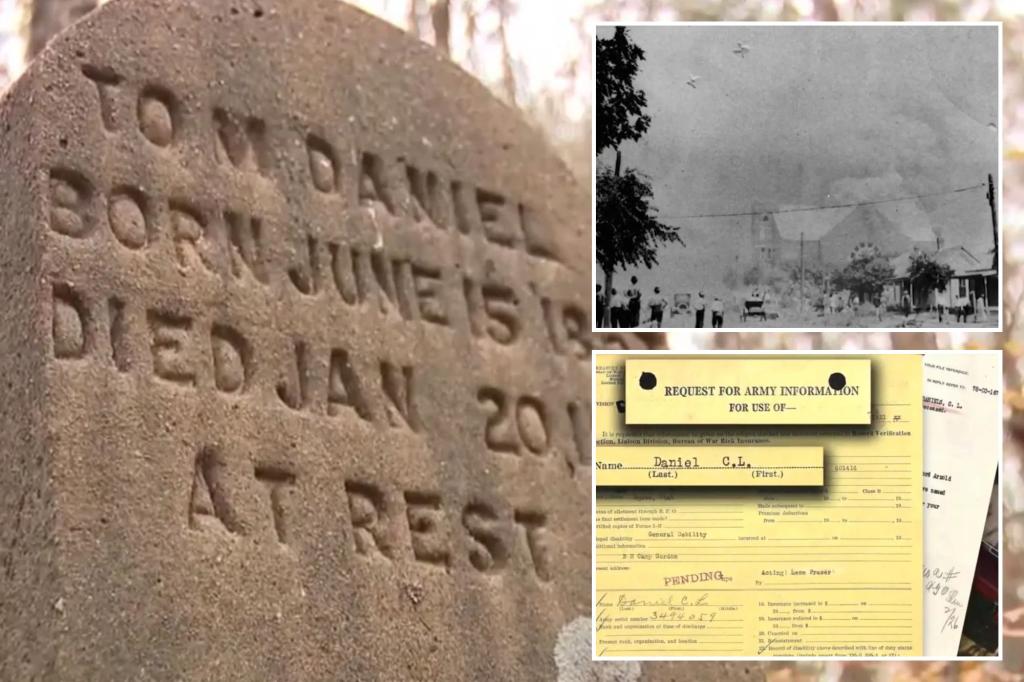The Tulsa Race Massacre of 1921, a horrific event etched in American history, witnessed the destruction of the prosperous Greenwood District, known as Black Wall Street, and the brutal murder of hundreds of Black residents. Over a century later, the painstaking work of genealogists and forensic scientists continues to unearth the identities of the victims, offering a measure of closure to their descendants and shedding light on the scale of the tragedy. One such story of rediscovery is that of C.L. Daniel, a young World War I veteran from Newman, Georgia. Daniel’s journey, tragically cut short in Tulsa, has been pieced together through diligent research and DNA analysis, connecting his descendants scattered across the country and revealing a poignant tale of family, loss, and the enduring quest for justice.
Daniel’s story began to resurface in August 2023, when Angela Poythress, a resident of Newnan, Georgia, received an unexpected email. The message indicated a potential connection between her family and the Tulsa Race Massacre, a revelation that would soon unravel a century-old mystery. Simultaneously, a forensic team dedicated to identifying the massacre’s victims had been tirelessly tracing familial lines, their efforts leading them to the name of C.L. Daniel. Their search was further aided by Alex Whittler, a news anchor who facilitated connections between potential relatives and the forensic team for DNA testing. This collaborative effort proved crucial in piecing together Daniel’s identity and locating his living descendants.
The pursuit of Daniel’s identity took a significant leap forward when Andrew Poythress, a relative of Angela, underwent a DNA test. The results revealed a “complete match” with C.L. Daniel, confirming a familial link and providing concrete evidence of Daniel’s fate. Remarkably, the search extended beyond Georgia, reaching Stacy “Daniel” Brown in Florida. Brown, whose grandfather shared the same name as C.L. Daniel, had also been contacted by the forensic team. The DNA analysis confirmed a familial connection between Brown and the Poythresses, establishing C.L. Daniel as their uncle and revealing a wider network of relatives connected to the Tulsa tragedy.
The identification of C.L. Daniel not only brought closure to his descendants but also unveiled a heart-wrenching chapter of his life. Daniel, a World War I veteran, had been injured during his service and honorably discharged. He was passing through Tulsa, hoping to return to his mother in Georgia, when the massacre erupted. His mother, Amanda Meriweather, a widow with seven children, had desperately sought confirmation of her son’s death and compensation for his military service but never received a response. Letters written by Daniel to the Veterans Administration, expressing his desire to return home to his mother, underscore the tragedy of his untimely death and the profound loss suffered by his family.
In a poignant tribute to a life tragically cut short, C.L. Daniel was finally laid to rest in the fall, over a century after his death. Former Tulsa Mayor G.T. Bynum orchestrated the ceremony, ensuring that Daniel’s surviving descendants could participate in honoring their ancestor. The ceremony served not only as a final farewell but also as a testament to the enduring power of family and the importance of acknowledging the victims of historical injustices. While Daniel’s remains were interred in Tulsa, his descendants aspire to eventually bring him back to Georgia, to the cemetery where his parents are buried. However, the neglected state of the cemetery presents a significant challenge.
The quest to bring C.L. Daniel home has ignited a new mission for his descendants – the restoration of the dilapidated cemetery where his parents rest. Overgrown and marked by sunken headstones, the cemetery reflects years of neglect. Determined to provide a proper resting place for their ancestor, Daniel’s descendants have embarked on a project to refurbish the cemetery, ensuring that future generations can honor their family’s history and legacy. This endeavor represents not just a physical restoration but also a symbolic gesture, reclaiming a space of remembrance and honoring the memory of those lost to time and tragedy. Meanwhile, the forensic team continues its crucial work, seeking to identify more victims of the Tulsa Race Massacre. Their ongoing efforts focus on families in Louisiana, Alabama, North Carolina, and Texas, continuing the search for answers and closure for those affected by this devastating event.

